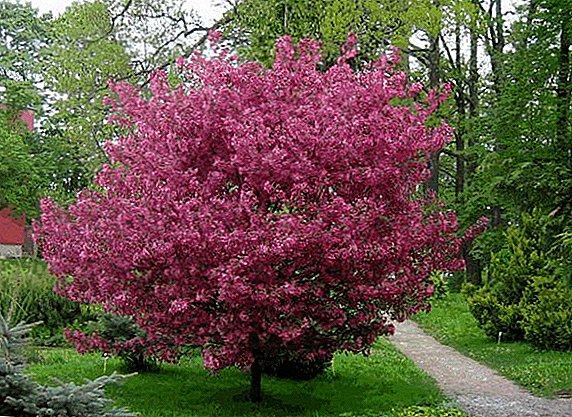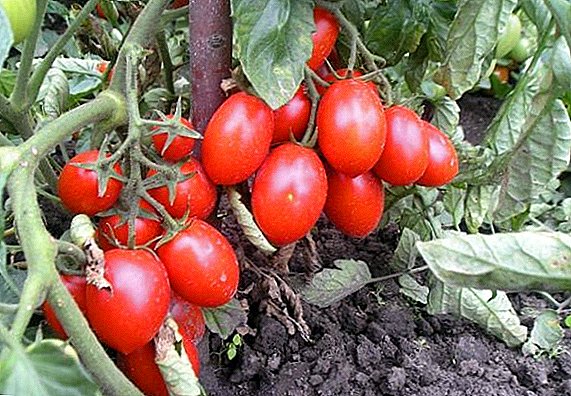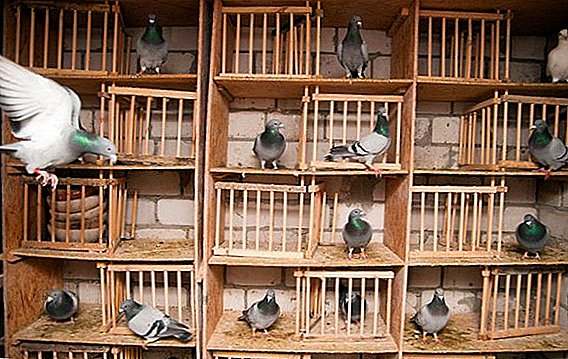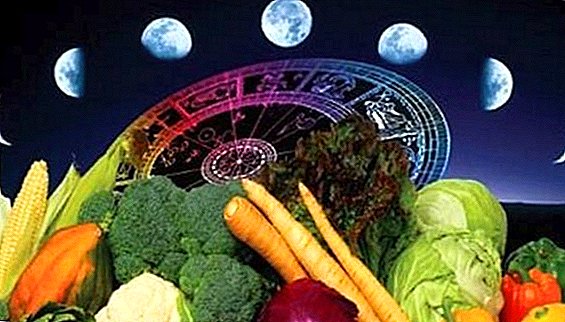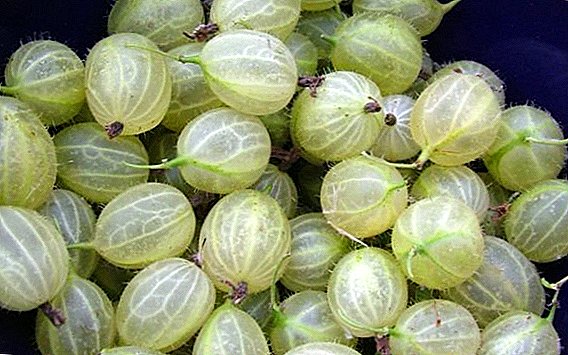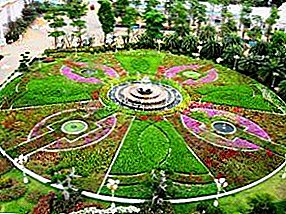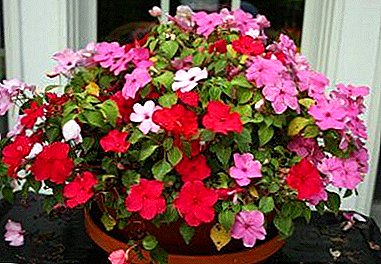 Potatoes - one of the main crops grown in our country. However, not all soils and not any climate are suitable for obtaining an acceptable yield. This article is devoted to the topic of fertilizers that will help increase yields and, under almost any circumstances, collect a decent amount of this root crop.
Potatoes - one of the main crops grown in our country. However, not all soils and not any climate are suitable for obtaining an acceptable yield. This article is devoted to the topic of fertilizers that will help increase yields and, under almost any circumstances, collect a decent amount of this root crop.
Potatoes and fertilizers
One plant requires up to 20 g of phosphorus, 50 g of nitrogen and 100 g of potassium for a good development over the season. Fertilizers for potatoes can be applied almost all year round: in the fall, long before planting, in the spring, in the summer and directly in the process of planting.
Did you know? Potato berries are quite toxic to humans. Enough to eat 1-2 to earn poisoning.It must be remembered that it is necessary to feed this plant in large volumes than it needs for development, since some of the nutrients simply do not reach the final point.
 Some weeds are taken away from themselves, some more simply evaporate or react with the soil complex and are consumed by the soil living creatures.
Some weeds are taken away from themselves, some more simply evaporate or react with the soil complex and are consumed by the soil living creatures.Fertilizers for potatoes
Most often, the nutrients for potatoes combine, combining organic and inorganic. However, it is possible to enrich the soil and use some agrochemicals without the use of organic substances.
Organics
Mug, bird droppings, wood ash, peat manure and compost are suitable for feeding potatoes. A good feature of this type of fertilizer is that it is impossible to overdo it.  The more you add, the better. However, it is worth remembering that organic matter is a fertile environment for the development of all kinds of parasites and pathogens, so use it in combination with insecticides.
The more you add, the better. However, it is worth remembering that organic matter is a fertile environment for the development of all kinds of parasites and pathogens, so use it in combination with insecticides.
Did you know? For the first time in Europe, potatoes appeared thanks to monk Neronim Kordan, who brought him from South America in 1580, but up to the 17th century, they tried not to eat him, as it was believed that he causes all sorts of illnesses and ailments.Also, when using organic fertilizers, it should be remembered that young varieties simply do not have time to take all the nutrients out of them, in such cases it is necessary to use them in combination with mineral fertilizers.
Minerals
Mineral fertilizers for potatoes include almost the entire known spectrum: nitrogen, phosphate, potash, etc.  You can also add various microfertilizers to the top dressing of potatoes, suppose copper or molybdenum, and boron is often used on soils rich in lime. They create a good support in the assimilation of essential nutrients, regulate their positive effects on the plant's body.
You can also add various microfertilizers to the top dressing of potatoes, suppose copper or molybdenum, and boron is often used on soils rich in lime. They create a good support in the assimilation of essential nutrients, regulate their positive effects on the plant's body.
We advise you to familiarize yourself with the agrotechnics of growing such varieties of potatoes: "Kiwi", "Gala", "Good Luck", "Irbitsky", "Rosara", "Queen Anna", "Blue".
Top dressing methods
All about fertilizers for potatoes in different periods of the year, different methods of application and suitable for this type of fertilizing. As with any other plant, there are two main ways of applying feedings, namely root and foliar. So, as a potato is a root crop, root fertilizing is the preferred method of fertilizer application. 
Root
This feeding, as a rule, takes place before the hilling of bushes, which is preceded by a slight loosening in order to facilitate the "travel" of nutrients from the soil to the roots of the plant.
After making such dressings, you should be abundant in watering the planted bushes. Here are the best fertilizers that are suitable for root dressings:
- Bird droppings: a rather aggressive substance, but it is possible to use it even fresh, for which it is necessary to dilute it in a ratio of 1:10 and then add the resulting substance between the rows.

- Urea: dissolves in a ratio of 1 tablespoon to a bucket of water, followed by watering under the root of the bushes, which must be preceded by a slight loosening. Manipulation is performed before the first earthing up. Under one bush, you must make no more than 0.5 liters of this solution.

- Mullein: 10 liters of water make 1 liter of fresh manure, then leave to ferment. Water between rows of plants.

- Herbal infusion: can be made from any weeds that you can find. Picked plants are soaked in water and, after a period of fermentation, diluted with water to a finished state, which resembles weakly brewed tea. Watering should be done in the evening, preferably without touching the stem. The best time for such feeding will be the beginning of summer, because during this period the plant is actively in need of nitrogen.

- Inorganic fertilizers: root dressing using this group of substances involves the use of any complex fertilizers, for example, a solution of ammonium nitrate (10 liters of water 20 g of the substance) or a mixture of potash, nitrogen and phosphorus fertilizers in a ratio of 2: 1: 1 (10 liters of water 25 g of mixtures).

Foliar
It is often produced during the active growing season of the plant. The need for such dressing occurs when starting fertilizer is not enough, due to the fact that a large amount of fertilizer initially applied is scattered for various reasons, without reaching the plant.
Important! Extra root dressing is best done after a thorough weeding of the beds, in the evening, which will save the leaves of the bushes from burns.Such a method of making nutrients involves pollination of its ground part with a spray gun. Below are some of the ways of this type of feeding:
- Carbamide: the solution consists of 5 liters of water, 150 g of potassium monophosphate, 5 g of boric acid and 100 g of urea. The application of this fertilizer is carried out in two stages: the first passes 2 weeks after the emergence of shoots, and the second - with an interval of two more weeks. Such processing can be done until the onset of flowering plants.
- Phosphoric: The best time to conduct it will be the end of the flowering period. The solution is prepared at the rate of 100 g of superphosphate per 10 liters of water - this is enough for processing 10 square meters. The phosphorus obtained by the plant in this way will increase the overall yield and increase the starchiness of the root crop.
- Humates: This top dressing is best made after the fourth leaf of the potato has appeared; it is necessary to maintain periods of two weeks between treatments. For use is suitable, for example, "Humate + 7", with the norms of 3 liters per hundred. To obtain a working solution, it is necessary to dilute 2 g of the substance in 10 l of water.
- Nettle infusion. Preparing a substrate for feeding is quite simple: adult nettle plants are poured with water and infused in a warm place until signs of fermentation appear. Further, after decanting and breeding, you can proceed to the treatment of plants, maintaining the intervals of 10 days.
How to make a choice
As already mentioned, it is possible to apply fertilizers for almost the entire year, except perhaps for the winter period. It will not be superfluous to combine different terms for getting the most results.
Important! Remember that when planting potatoes in virgin lands for the first year, the soil can not be fertilized, since it is already quite rich in various nutrients.
Autumn
During this period, after the removal of the tops, it is recommended to land on the site of the future planting of various green manures, for example, white mustard. In winter, they themselves will fall down, and in the spring it will be possible to plow the soil along with them.
When preparing the ground for autumn, it is necessary to dig it up to the depth of one bayonet. It is not recommended to break large clods of soil, as this increases the chances that cold air will get to the green manure roots and they will freeze out.  Fertilizers recommended for potatoes in the fall are as follows: 5-7 buckets of humus or fresh manure should be taken for each square meter of soil, mineral fertilizers should be applied in parallel, for example, superphosphate at a dose of 30 g per 1 sq. Km. m. You can also make potassium sulfate at the rate of 15 g per 1 square. m
Fertilizers recommended for potatoes in the fall are as follows: 5-7 buckets of humus or fresh manure should be taken for each square meter of soil, mineral fertilizers should be applied in parallel, for example, superphosphate at a dose of 30 g per 1 sq. Km. m. You can also make potassium sulfate at the rate of 15 g per 1 square. m
We recommend to learn how to sow siderata under potatoes.If the soil on the site has an increased acidity, in the autumn it is worth taking measures to restore its natural balance. To do this, use ash, lime or dolomite flour.
Dosage - 200 g per 1 square. m. It is possible to determine that the desired result is achieved by changing the color of the soil to bluish, as well as by the appearance of moss and sorrel in the garden beds.
Spring
The potato does not tolerate excess moisture, and therefore it is recommended to establish good drainage in the spring period in the area of its planting.  The main nutrient that potatoes will need during this period of the year is nitrogen. This element is contained in large quantities in manure, therefore during this period it is recommended to use as much of this fertilizer as possible.
The main nutrient that potatoes will need during this period of the year is nitrogen. This element is contained in large quantities in manure, therefore during this period it is recommended to use as much of this fertilizer as possible.
The best fertilizers for potatoes when planting in the spring in the spring are listed below, all dosages are based on 1 square meter:
- A mixture of one bucket of humus, one glass of ash and 3 tablespoons of nitrophoska.
- After plowing the field, planted with sideratami, a mixture of 20 g of potassium sulfate and 20 g of ammonium nitrate.
- A bucket of peat manure, about 25-30 g of nitrophoska in combination with row spacing with a mixture of potassium sulfate and ammonium nitrate, 20 g each
- 7-10 kg of humus in combination with 20 g of ammonium nitrate and potassium sulfate, 30-40 g of superphosphate and 450 g of dolomite flour.
- In the absence of organic matter, it is possible to use only mineral fertilizers, for example, 5 kg nitrophoska per hundred or 3 kg nitroammofoski.

When landing
It is believed that the point application of additional fertilizing brings much more benefit to the plant than spreading fertilizer around the perimeter, and much more economically.
Often fertilizers are applied immediately before planting in the hole. If you bring in organics, it can be, for example, 700 g of dry humus and 5 tablespoons of ash.  And when using agrochemicals, the following scheme is possible: half a cup of bone meal and 1 tbsp. spoon nitrofoski. A good result also shows the use of ready-made fertilizers.
And when using agrochemicals, the following scheme is possible: half a cup of bone meal and 1 tbsp. spoon nitrofoski. A good result also shows the use of ready-made fertilizers.
Summer
It is recommended that summer top dressing be performed until mid-June, otherwise it is possible that the maturation process of the tubers will be delayed. The optimal period is the flowering time.  The most suitable fertilizer for potatoes after planting is mineral, for example: 2 tablespoons of superphosphate are added to each square meter of strip. This fertilizer application is the least critical, and if necessary it can be omitted.
The most suitable fertilizer for potatoes after planting is mineral, for example: 2 tablespoons of superphosphate are added to each square meter of strip. This fertilizer application is the least critical, and if necessary it can be omitted.
So, despite all the seeming simplicity in the care, the potato is quite picky about nutrients and suggests a reverent attitude to fertilizer issues. Remember that the best time for fertilizing potatoes is when they are planted in the spring. We hope that this article will help you to harvest a truly Dutch potato crop.







